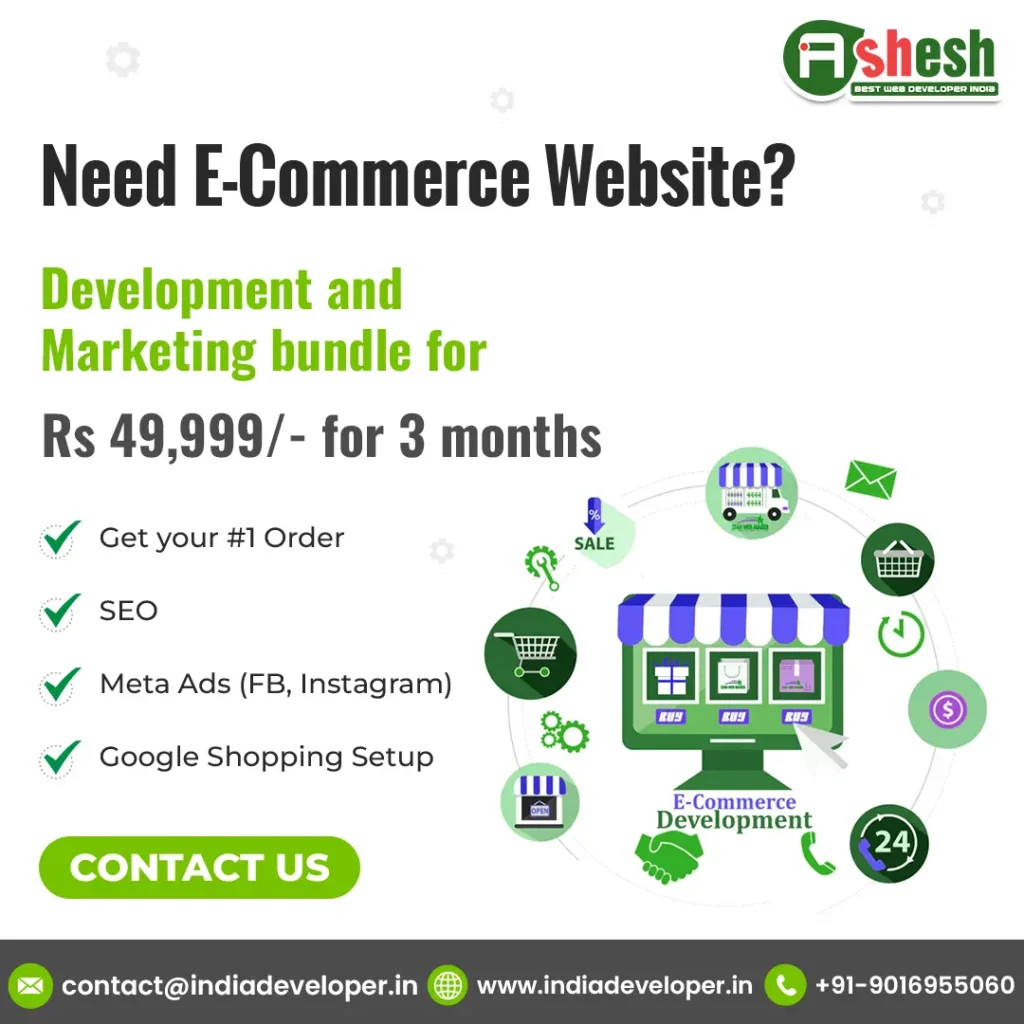Over the past ten years, the e-commerce sector has grown explosively, changing both how consumers and organizations conduct business. There has never been a greater need for creative and efficient website construction techniques as more individuals purchase online. This post will explore the key tactics that facilitate the establishment of successful e-commerce websites, assisting companies in building reliable, user-friendly, and lucrative online storefronts.
E-commerce has grown significantly on all continents and is becoming a global phenomenon. This rise has been driven by factors like rising internet penetration, smartphone proliferation, and shifting consumer behaviors.
Customer Preferences
Modern consumers prefer online purchasing due to its convenience, variety, and affordable prices. Businesses now need to implement e-commerce models in order to match client demands and maintain their competitiveness as a result of this shift in preference
Important Techniques for Developing E-Commerce Websites
1. Responsive Design With a responsive design, your e-commerce website will work and be available on PCs, tablets, and smartphones alike. This strategy offers a smooth user experience, which is essential for keeping clients and lowering bounce rates.
Benefits:
improved usability across all platforms
higher rankings in search engines
increased rates of conversion
2. User-Centric UX/UI Design Developing an intuitive and captivating online store requires careful consideration of both user experience (UX) and user interface (UI) design. While a great user experience encourages visitors to remain longer and make purchases, a well-designed interface makes navigation easier.
Important components:
Simple and easy-to-use navigation
aesthetically pleasing layout
quick loads
Simple checkout procedure
3. Safe Gateways for Payment
A significant priority in e-commerce is security. By integrating secure payment gateways, businesses can transact with confidence and safety.
Benefits:
Enhanced credibility and trust
defense against deception
adherence to industry norms
4. Thick Search and Filtering Capabilities
A user-friendly search and filtering system makes it easier for shoppers to find products fast. Having this feature is crucial for big e-commerce websites with huge product catalogs.
Features:
A search bar with auto complete recommendations
Advanced filters (such as brand, rating, and price range)
Sorting choices (such as greatest sellers, newest, and relevant items)
5. Exceptional Product Photos and Details
For online sales to be successful, product descriptions and high-quality photos must be included. They increase customer satisfaction and decrease the possibility of returns by giving customers a thorough grasp of the product.
Top Techniques:
Make use of sharp pictures
Provide zoom and numerous view options.
Compose precise and in-depth product descriptions.
Emphasize the salient characteristics and advantages.
Advanced Techniques for E-Commerce
6. Customisation and AI Incorporation
By customizing content and recommendations for each user, personalization and artificial intelligence (AI) technology can dramatically improve the shopping experience. AI-powered technologies examine consumer behavior and tastes to make tailored product recommendations.
Applications:
Specific product suggestions
Strategies for dynamic pricing
Customer service chatbots
7. Optimizing for Mobile
It’s imperative to optimize your e-commerce site for mobile, given the rise in the popularity of mobile devices for online purchasing. Users on smartphones and tablets will have a seamless purchasing experience when a website is optimized for mobile devices.
Tips:
Apply responsive design strategies.
Simplify the checkout and navigation operations.
Make sure that mobile devices load quickly.
8. Integration of Social Media
Including social media in your e-commerce website can improve brand exposure, boost traffic, and boost sales. Social media sites provide a range of options for product promotion and customer interaction.
Strategies:
Include social media sharing icons on product pages.
Run promotions and advertisements on social media
Make use of user-generated reviews and material.
9. Content Marketing and SEO
It takes both content marketing and search engine optimization (SEO) to bring organic traffic to your e-commerce website. It is possible to draw in and keep clients by making your website search engine-friendly and producing high-quality content.
Important Strategies:
Perform keyword research and make use of pertinent terms.
Enhance product pages by adding descriptions and meta tags.
Produce videos, blog entries, and other content to keep your audience interested.
10. Analytics and Decisions Based on Data
You can monitor and assess your e-commerce site’s performance by utilizing analytics. Making decisions based on data can help you better understand consumer behavior, spot trends, and optimize your website.
Tools:
Google Analytics provides insights into traffic and behavior
Heatmaps for comprehending user behavior
A/B testing to improve content and design
Future Directions for the Growth of E-Commerce
Before making a purchase, buyers may see objects in their surroundings thanks to augmented reality (AR) technology. Having this immersive experience can boost confidence and lessen anxiety while making purchases.
Blockchain Methods
Blockchain technology improves e-commerce transaction security and transparency. It can be applied to supply chain management, safe payment processing, and product authenticity verification.
Conclusion
FAQ
What role does responsive design play in online shopping?
By making sure your website is functioning and available across all platforms, responsive design enhances user experience and boosts search engine results.



